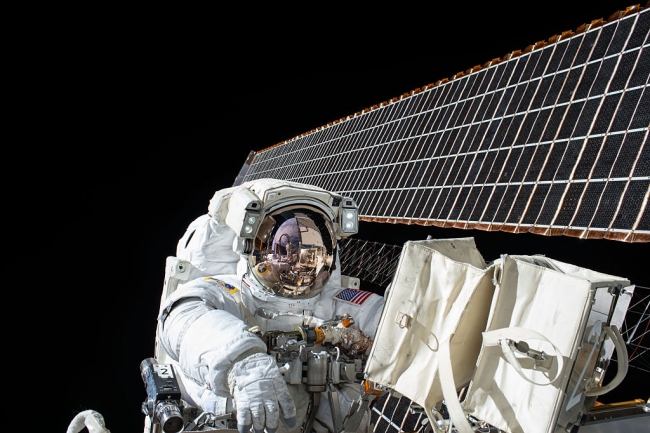-
Tips for becoming a good boxer - November 6, 2020
-
7 expert tips for making your hens night a memorable one - November 6, 2020
-
5 reasons to host your Christmas party on a cruise boat - November 6, 2020
-
What to do when you’re charged with a crime - November 6, 2020
-
Should you get one or multiple dogs? Here’s all you need to know - November 3, 2020
-
A Guide: How to Build Your Very Own Magic Mirror - February 14, 2019
-
Our Top Inspirational Baseball Stars - November 24, 2018
-
Five Tech Tools That Will Help You Turn Your Blog into a Business - November 24, 2018
-
How to Indulge on Vacation without Expanding Your Waist - November 9, 2018
-
5 Strategies for Businesses to Appeal to Today’s Increasingly Mobile-Crazed Customers - November 9, 2018
Spacewalking astronauts install new door on International Space Station
NASA describes the docking adaptor as a “metaphorical gateway to a future” that will allow a new generation of USA spacecraft – the first since the space shuttle program ended in 2011 – to carry astronauts to the space station.
Advertisement
Commander Jeff Williams and Flight Engineer Kate Rubins of NASA will be conducting the six and a half hour long spacewalk so that they can attach the new International Docking Adapter to the ISS.
Two US astronauts are installing a new doorway on the International Space Station, a key step toward opening up the station to new commercial vehicles.
The Boeing-built International Docking Adapter, or IDA, was delivered to the station in July aboard a SpaceX Dragon cargo ship.
SpaceX and Boeing are both developing a new generation of human-crewed spacecraft, which the two companies hope might enter official service by early 2018.
Meanwhile, Russia’s Roscosmos space agency is backing away from its role in the space station; the agency just announced it’s considering reducing its crew from three to two, according to RT.
NASA had meant to have the first of two new docking ports installed a year ago, but a takeoff accident in June 2015 left the launch equipment destroyed.
The novel adapters will function in synch with SpaceX’s Crew Dragon and Boeing’s CST-100 Starliner.
“It’s really good we have an global standard now that anybody can build against and come dock to the station or to anything that has the same standard”, David Clemen, Boeing’s development director for the space station, said in a NASA press release. This was the fourth spacewalk for Williams, and the first for Rubins. Private space companies such as SpaceX and United Launch Alliance planned more than 30 launches from Florida alone in 2016, almost double the 2015 schedule.
“The adapter represents the first on-orbit element built to the docking measurements that are standardized for all the spacecraft builders across the world”, NASA states. Besides supporting ISS, these commercial capabilities could ultimately benefit the US economy by making domestic launch vehicles more competitive in global markets.
This will consequently increase the time USA crews can dedicate to scientific research helping prepare astronauts for deep space missions such as the journey to Mars.
They will be assisted by Japanese astronaut Takua Onishi, working inside the space station, and astronaut Tom Marshburn, a veteran spacewalker in mission control who will handle communications between the station and flight controllers in Houston. But that mission failed when the launch vehicle disintegrated about two minutes after launch.
It’s the first spacewalk for Rubins, a biologist specializing in infectious diseases now on her first spaceflight.
“If you look at the original plan, it envisioned the launch of Multipurpose Laboratory Module to the ISS, and only then a crew increase”.
Advertisement
The new adaptor is more sophisticated than past equipment as it will enable automatic parking instead of the grapple and berthing process, NASA said.




























